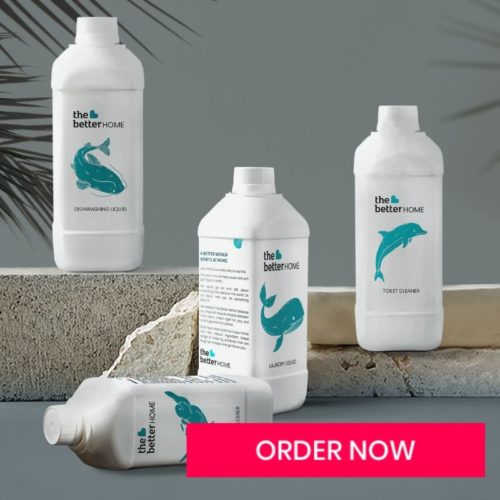Do you have trouble breathing or feel an itchiness in your throat while cleaning your home? Well, this might be because of the VOCs (Volatile Organic Compounds) in your household cleaners.
Recent studies have shown that besides emissions from vehicles, household cleaners, paints and perfumes also release a certain amount of fumes that contribute to air pollution and cause severe respiratory problems.
The study showed that these fumes become primary contributors to air pollution when it comes in contact with other chemicals forming harmful ozone and fine polluting particles called PM 2.5.
When we took a closer look at the VOCs in home cleaners, we found three major compounds that were common in most cleaners available in the market.
1. Ethanol
Ethanol which is commonly seen in cleaners acts as a disinfectant or a sanitizer. Also though it is heavily used in many of our household products, it is highly flammable and causes severe health problems if you are directly exposed to it.
Many cases of pulmonary diseases and respiratory tract infections have been reported due to the exposure towards ethanol.
Chemicals like ethanol, when used in cleaners, remain stagnant on our floors and bathrooms and leave us exposed to it on a long term basis.
2. Formaldehyde
Formaldehyde is often seen in cleaners and detergents in the form of fragrances. If not labelled as formaldehyde, these compounds will be found in the form of terpenes. A recent study also proved formaldehyde to be a carcinogenic compound and continuous exposure to these compounds can cause permanent damage to the lungs.
A study conducted on industrial and household workers exposed to chemical cleaners proved the same. ‘Participants reported using a total of 66 different products to clean residential, industrial and commercial zones. Of these, a total of 48 different respiratory irritants and sensitizers were identified.’
3. Chlorine
Chlorine or bleach is yet another hazardous chemical that is commonly used in household cleaners. You can find it in floor cleaners, toilet cleaners and even detergents mainly used to get rid of tough stains.
Not only is chlorine harmful on its own, but it also creates harmful and toxic fumes when mixed with ammonia causing cellular damage in the lungs and nasal pathways.
This can be particularly dangerous for pets, babies and children who are on their primary stages of mental and physical development.
A VOC-Free Solution
These bacteria-based cleaners, which are made from 4th generation compounds, make a great alternative to the chemical-based cleaners commonly found in the market. These household products are free of harmful VOCs and cause no pollution to the environment.
These cleaners are also entirely safe for babies and pets. Being rich in good bacteria, the residue water from these cleaners can even be used to water your plants.
Are you looking for reliable, planet-friendly home cleaners? Well, they are now just a click away. Your laundry, dishwashing, floor and toilet cleaning is all set to get safe. Follow this link to know more.
Also Read: Lake-Killing Phosphate: Canada Banned It, Indian Detergents Still Use 2.88 Tons/Yr!
(Edited by Gayatri Mishra)
Like this story? Or have something to share? Write to us: contact@thebetterindia.com, or connect with us on Facebook and Twitter.
If you found our stories insightful, informative, or even just enjoyable, we invite you to consider making a voluntary payment to support the work we do at The Better India. Your contribution helps us continue producing quality content that educates, inspires, and drives positive change.
Choose one of the payment options below for your contribution-
By paying for the stories you value, you directly contribute to sustaining our efforts focused on making a difference in the world. Together, let's ensure that impactful stories continue to be told and shared, enriching lives and communities alike.
Thank you for your support. Here are some frequently asked questions you might find helpful to know why you are contributing?


